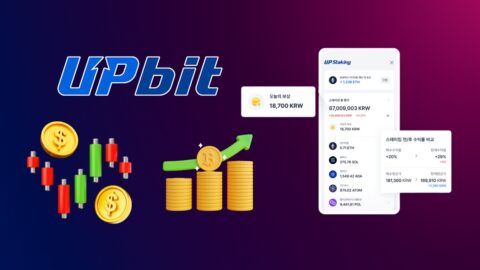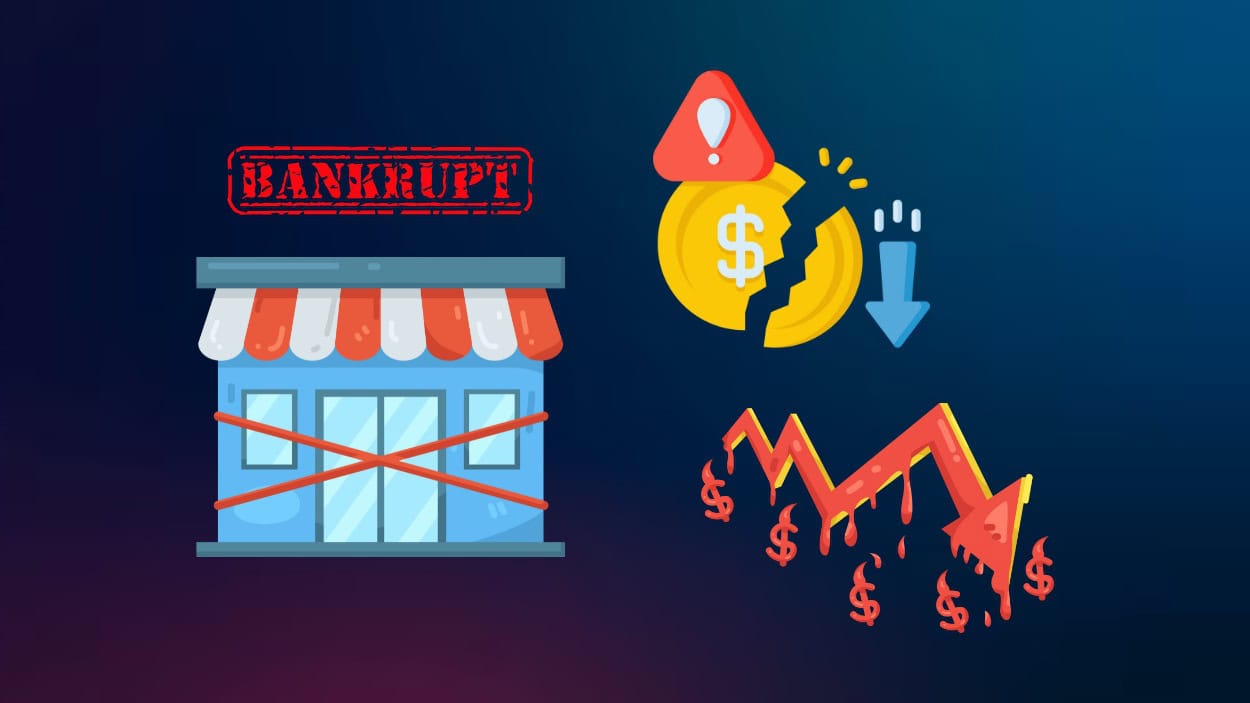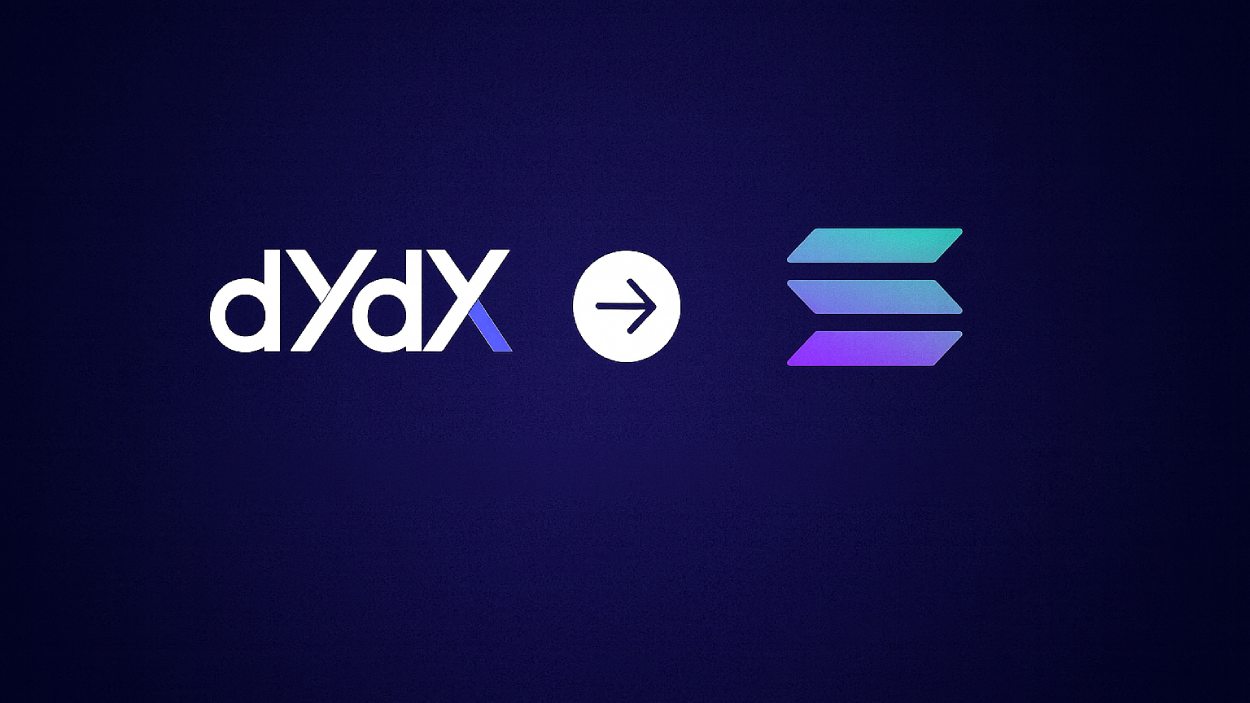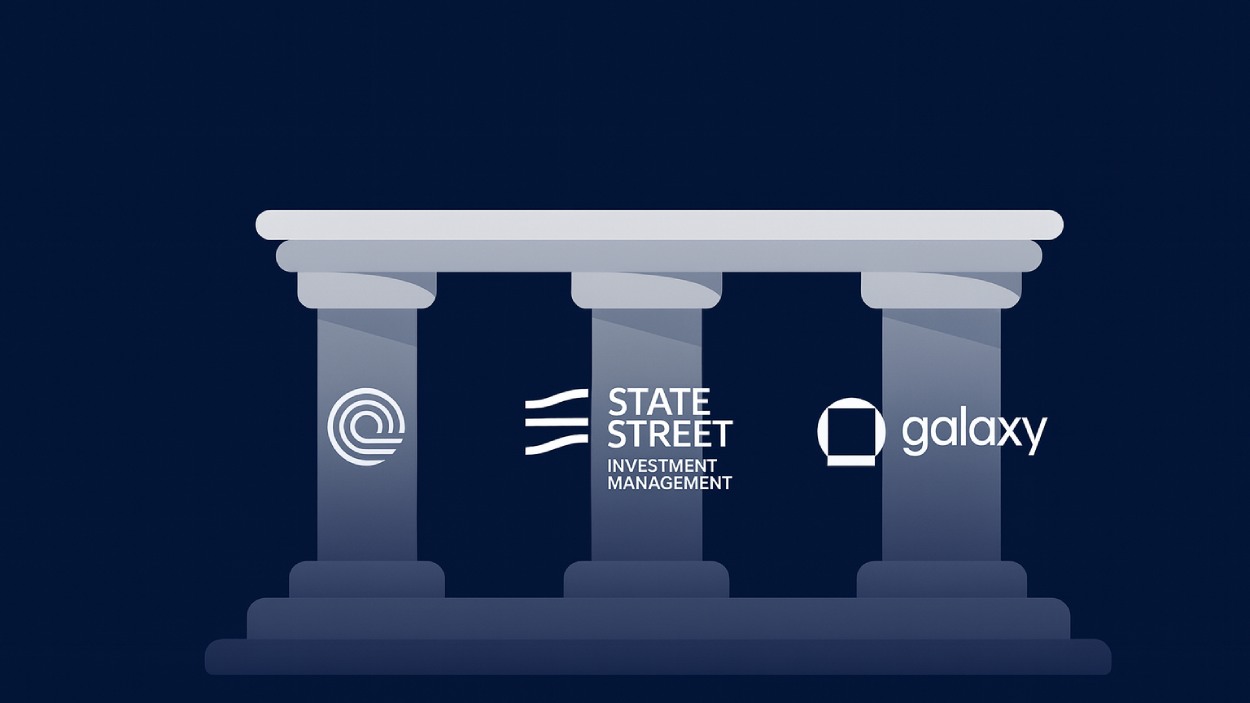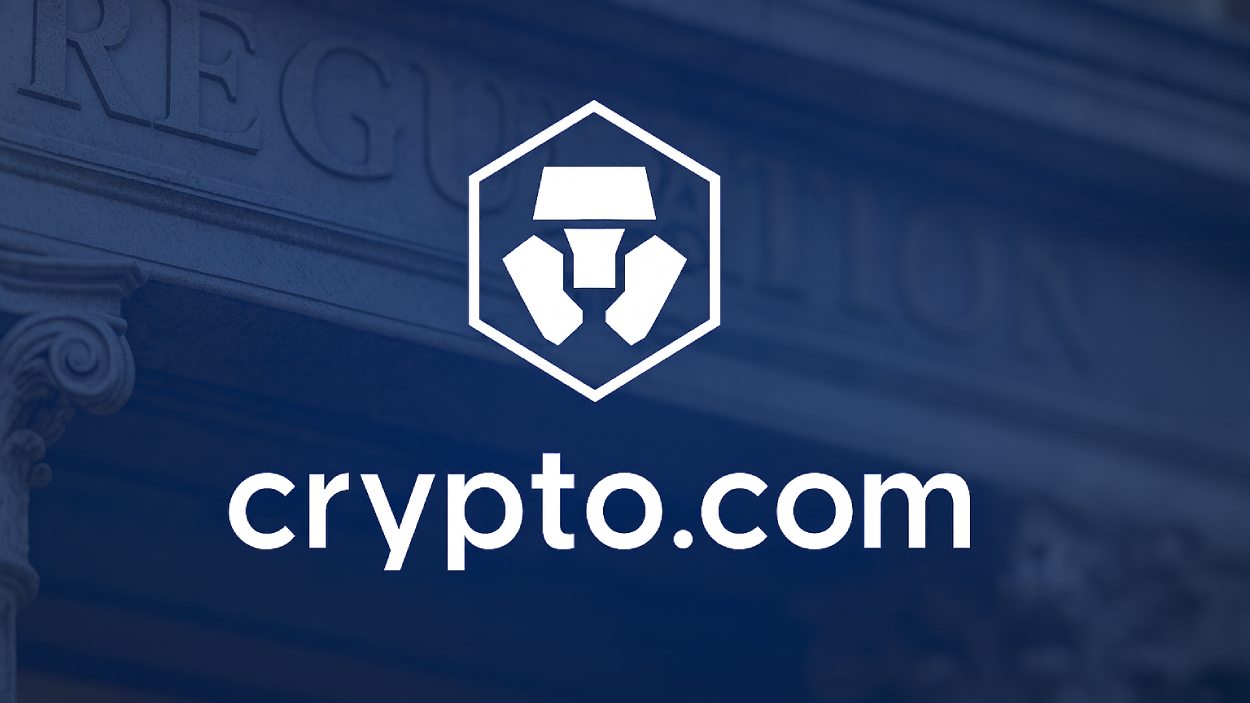Imagine a scenario where financial institutions operate in a world without anti-money laundering (AML) software. Transactions from suspicious entities would go unnoticed, and illicit money flows could destabilize economies globally. That’s the scenario AML software strives to prevent. In today’s digital age, financial crimes are evolving, and so must the tools used to combat them. Anti-money laundering software has become a crucial line of defense, empowering banks, financial institutions, and governments to detect, monitor, and report suspicious activities. This article dives deep into the 2025 AML software landscape, exploring key milestones, market size, growth factors, and more.
Editor’s Choice: Key AML Software Milestones
- In 2025, the global AML software market is valued at approximately $3.76 billion, reflecting continued growth as financial institutions invest in compliance automation and AI-enhanced monitoring.
- The US remains the largest market, accounting for 31% of global AML software revenue in 2025, driven by stringent regulations and increasing cross-border financial activity.
- The AML software market is projected to grow by 9.1% in 2025, supported by the widespread use of machine learning algorithms, real-time screening tools, and transaction behavior analytics.
- Global AML-related regulatory fines reached $11.4 billion in 2025, underscoring the urgent need for advanced detection, case management, and audit capabilities.
- AI-powered AML systems boosted detection accuracy by 43% in 2025, particularly in identifying suspicious transaction patterns, beneficial ownership mismatches, and synthetic identity fraud.
- A 2025 industry survey found that 76% of financial institutions rank AML software as their top compliance priority, reflecting increasing regulatory scrutiny and reputational risk concerns.
- Cloud-based AML solution adoption rose to 69% in 2025, due to benefits in real-time updates, integration with other RegTech tools, and improved cost scalability for global compliance teams.
Anti-money Laundering Market Size & Trends
- The global anti-money laundering software market is projected to hit $4.5 billion by 2026, growing at a CAGR of 12.3% from 2024 onwards.
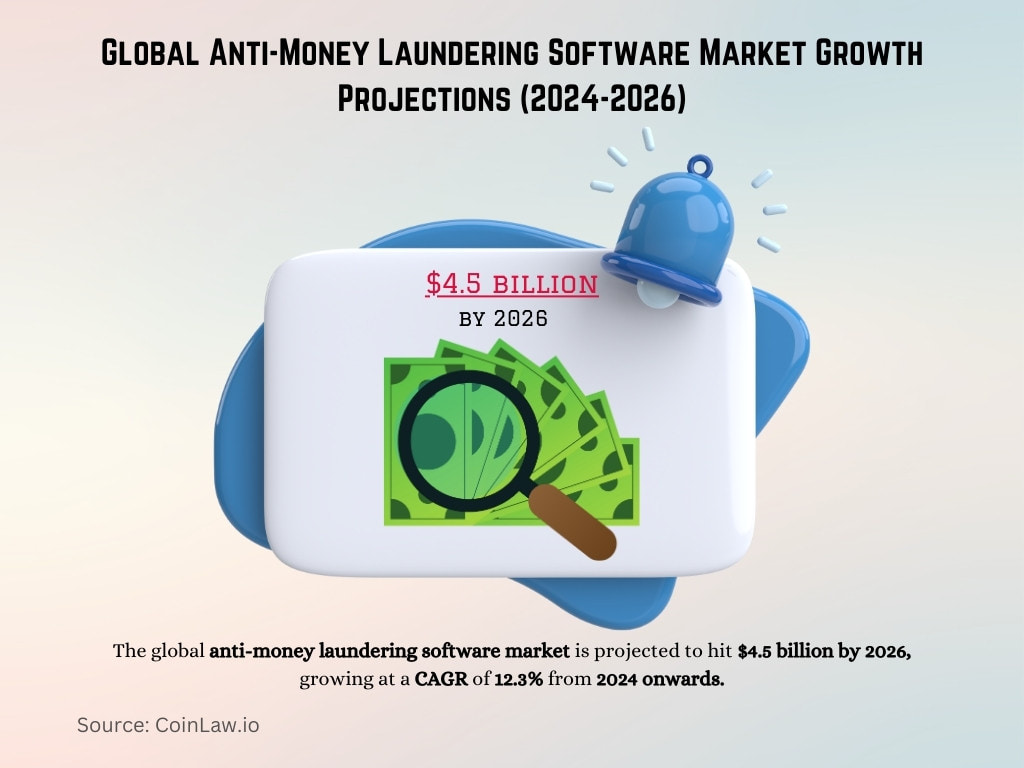
- North America’s AML software market is projected to reach $1.72 billion in 2025, driven by tightening regulatory enforcement, the rise in real-time payments, and expanding crypto oversight.
- The Asia-Pacific AML market is experiencing the fastest growth, with a projected CAGR of 15.2% from 2025 to 2029, fueled by the digitization of banking services and regulatory modernization in India, Singapore, and Indonesia.
- As of 2025, 68% of large banks globally have adopted real-time transaction monitoring as a standard AML practice, driven by the need to detect instant payment fraud and mule account activity.
- Machine learning–driven AML tools have reduced false positives by up to 29% in 2025, significantly improving alert prioritization, risk scoring, and overall compliance productivity.
- Blockchain analytics solutions are now integrated into 42% of AML platforms in 2025, as crypto compliance becomes mainstream. The segment is growing at a compound annual rate of 37%, tracking wallet-to-wallet activity and mixing services.
- Europe maintains a strong position in the global AML market, holding 26% of total market share in 2025, backed by updated frameworks such as 6AMLD and the EU AML Authority (AMLA) set to launch full operations.
Growth Factors
- The continued rise of digital banking and online transactions has led 71% of financial institutions in 2025 to cite this trend as a primary driver for adopting AML software, particularly for real-time monitoring.
- AI and machine learning integration in AML systems has reduced the average time to detect suspicious activity by 41% in 2025, enabling faster investigations and fewer manual reviews.
- Regulatory scrutiny has intensified globally, with countries like the UK, Germany, and Singapore implementing real-time compliance reporting and beneficial ownership verification mandates, increasing the demand for robust, adaptive AML platforms.
- The crypto market’s expansion has sharply elevated compliance risks, crypto-related crimes rose by 34% in 2025, fueling demand for blockchain forensic tools and wallet screening features in AML software.
- Digital identity verification saw a 49% rise in demand in 2025, driven by remote onboarding, KYC automation, and the rise of synthetic identity fraud, especially in neobanking and fintech sectors.
- The Financial Action Task Force (FATF) released enhanced guidelines in early 2025, focusing on virtual asset service providers (VASPs) and cross-border information sharing, prompting global AML framework upgrades.
- Global financial institutions reported a 23% increase in AML-related compliance costs in 2025, accelerating the shift to cloud-based, AI-powered AML solutions that offer both cost savings and scalability.
Global Anti-Money Laundering Market Share by Region
- North America holds the largest share of the global anti-money laundering market at 46%, driven by stringent regulations and advanced compliance infrastructure.
- Europe accounts for 22% of the market, reflecting strong enforcement of financial crime laws and rising adoption of AML solutions.
- The APAC region captures 18%, supported by increasing regulatory scrutiny and fintech expansion in countries like India and China.
- South America contributes 8%, showing gradual growth due to improving regulatory frameworks and digital transformation in banking.
- MEA (Middle East and Africa) holds the smallest share at 6%, but is expected to grow with ongoing financial modernization efforts.

Component Insights
- Transaction monitoring systems remain the largest AML software component in 2025, accounting for 47% of the global market share, as demand surges for real-time alerting and risk scoring across payment ecosystems.
- Know Your Customer (KYC) solutions represent 31% of the AML software landscape in 2025, driven by stricter identity verification mandates and growing adoption of biometric onboarding tools.
- Currency transaction reporting tools saw a 15% increase in demand in 2025, in response to rising cross-border payment volumes, particularly in high-risk corridors across Asia and Latin America.
- Sanction screening systems experienced a 23% growth in adoption in 2025, as financial institutions respond to evolving geopolitical sanctions and expanded OFAC/EU blacklists.
- AI-enhanced behavioral analytics modules are now integrated into 44% of newly deployed AML software in 2025, significantly reducing false positives and enabling adaptive risk modeling.
- Regulatory reporting tools continue to see strong demand, with a 17% growth in 2025, driven by real-time compliance reporting mandates in regions including Europe, the US, and APAC.
- Fraud detection and risk management components are now standard in 63% of AML software platforms in 2025, as vendors consolidate AML and fraud use cases under unified solutions.
Deployment Insights
- Cloud-based AML software solutions saw an adoption rate of 65%, mainly due to their flexibility, scalability, and cost efficiency.
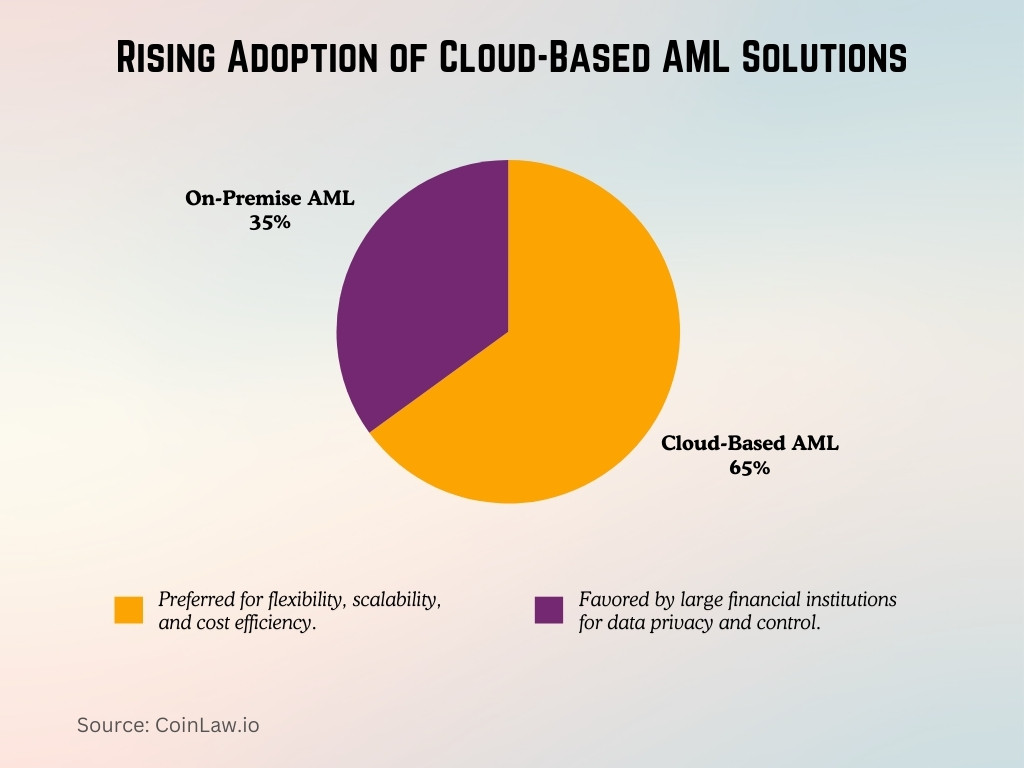
- On-premise AML solutions now hold 32% of the market in 2025, still favored by large financial institutions with strict data sovereignty, customization, and latency requirements.
- The shift to hybrid deployments has accelerated, with 24% of organizations in 2025 opting for a mix of cloud and on-premise infrastructure to balance control and scalability.
- Cloud-based AML tool adoption among SMEs grew by 28% between 2023 and 2025, driven by the demand for cost-effective, plug-and-play solutions with minimal IT overhead.
- In 2025, 52% of all new AML software deployments are cloud-native, reflecting the surge in digital-first strategies, faster compliance timelines, and remote-ready infrastructures.
- AI-driven cloud deployments have reduced average AML solution integration times by 34% in 2025, enabling institutions to adapt quickly to regulatory and threat landscape changes.
- SaaS-based AML platforms are on track to dominate the market, holding an estimated 67% share in 2025, projected to reach over 72% by 2026, fueled by demand for subscription-based pricing, automation, and flexibility.
End-use Insights
- Banking and financial institutions lead AML software demand in 2025, accounting for 61% of the market share.
- The insurance sector now makes up 13.5% of the AML software market, reflecting stronger global compliance enforcement.
- Fintech firms boosted AML investment by 35% year-over-year in 2025 due to surging crypto and online payment risks.
- Government agencies represent 14% of the market in 2025, maintaining a steady focus on anti-money laundering enforcement.
- Retail businesses adopting AML tools increased by 10%, especially those managing high-frequency digital payments.
- The crypto industry’s AML compliance solutions are growing at a 19.2% CAGR (2025–2032) amid intensified regulations.
- Wealth management firms saw 22% adoption of AML systems to secure high-value client portfolios in 2025.

Regional Insights
- North America continues to lead the AML software market, accounting for 31% of global revenue in 2025, driven by tightened regulatory enforcement, AI-led monitoring adoption, and expanded coverage of digital assets.
- Europe holds 27% of the global market share in 2025, supported by updated legislation including 6AMLD and the establishment of the EU AML Authority (AMLA), boosting compliance tech demand across Germany, France, and the UK.
- The Asia-Pacific region remains the fastest-growing AML market, with a revised CAGR of 15.2% from 2025 to 2029, propelled by real-time payment adoption, digital ID systems, and regulatory modernization in India, Singapore, and Indonesia.
- Latin America reported a 13% increase in AML software adoption in 2025, with Brazil, Mexico, and Colombia expanding their financial surveillance capabilities to combat crypto misuse and organized financial crime.
- Middle East & Africa saw a 24% rise in AML compliance investments in 2025, with institutions in the UAE, Saudi Arabia, and South Africa integrating automated reporting and sanctions screening tools.
- Australia and New Zealand are emerging as key regional players, with their AML software market growing at an annual rate of 10.4% in 2025, supported by APRA enforcement updates and mandatory real-time reporting standards.
- China and India remain central to AML growth in Asia, together contributing 38% of regional AML demand in 2025, driven by massive volumes of digital transactions, regtech partnerships, and heightened crypto surveillance.
Key Players in the Global Anti-Money Laundering Market
- Tata Consultancy Services (TCS) leads the market with a dominant 18% share, driven by strong financial services expertise and scalable AML solutions.
- NICE Actimize holds a 17% market share, offering advanced analytics and AI-powered tools for financial crime detection.
- Oracle Corporation commands 12% of the market, known for its robust compliance and risk management platforms.
- Cognizant Technology Solutions captures a 10% share, focusing on digital transformation and integrated AML offerings.
- Other key players collectively hold 10%, indicating a competitive environment with various emerging vendors.
- SAS Institute Inc. and BAE Systems each hold a 9% share, reflecting consistent demand for their specialized fraud detection and analytics platforms.
- Fiserv Inc. and ACI Worldwide Inc. both maintain an 8% share, supported by strong client bases in the banking and payments sectors.

Global Anti-Money Laundering Software Market Country-Level Analysis
- The United States continues to lead the global AML software market in 2025, maintaining a 31% share of global revenue, fueled by regulatory expansion, integration of AI/ML, and the enforcement of FinCEN’s AML Act updates.
- The UK holds an estimated 21% share of the European AML software market in 2025, driven by the Financial Conduct Authority (FCA) expanding real-time compliance mandates and tightening oversight of digital asset firms.
- Germany accounts for 19% of the European AML market in 2025, with increased investment in biometric digital ID systems, continuous transaction monitoring, and cross-border payment surveillance.
- China is experiencing a CAGR of 13% (2025–2029) in AML software adoption, supported by new rules targeting crypto exchanges, wealth tech firms, and cross-border fraud rings.
- India’s AML software market is growing at 16.1% annually through 2028, with demand surging due to the expansion of UPI, fintech partnerships, and enforcement actions under the PMLA (Prevention of Money Laundering Act).
- Australia and New Zealand contributed to an 8.3% increase in the Asia-Pacific AML market in 2025, as regulators target crypto exchanges, high-value transactions, and cross-border data transfers.
- Brazil remains at the forefront of AML software growth in Latin America, with a 15.5% rise in market share in 2025, driven by updated anti-corruption frameworks, PIX payment oversight, and expanded central bank mandates.
Competitive Landscape and Anti-Money Laundering Software Market Share Analysis
- FICO and Oracle jointly hold 23% of the AML software market in 2025, driven by their scalable and cross-platform AML ecosystems.
- SAS and Nice Actimize follow with a combined 19% share, thanks to AI-first analytics and fraud-centric compliance tools.
- Thomson Reuters reported a 13% rise in AML software demand in 2025, fueled by Regulatory Intelligence adoption across major banks.
- Temenos holds 8% of the market in 2025, expanding steadily among regional banks and neobanks with flexible AML modules.
- ACI Worldwide captured 6.5% market share this year as real-time AML and fraud monitoring gain ground in Asia-Pacific and Latin America.
- Nice Actimize maintains a 15.5% market presence in 2025, cementing leadership in enterprise-grade financial crime platforms.
- Verafin grew its AML footprint by 27% in 2025, continuing to dominate in North America’s credit union and community bank segments.

Technological Advancements in AML Software
- Artificial intelligence (AI) continues to reshape AML capabilities, with AI-driven transaction monitoring systems improving detection accuracy by 36% in 2025 and reducing false positives by nearly half across leading platforms.
- Machine learning (ML) algorithms are now embedded in over 70% of AML platforms globally, offering adaptive risk modeling, real-time anomaly detection, and the ability to evolve alongside shifting financial crime tactics.
- Natural Language Processing (NLP) has enhanced KYC and due diligence workflows, improving document analysis speed by 44% in 2025, with automated red-flag detection across unstructured textual data and identity sources.
- Blockchain analytics tools are now deployed by 48% of financial institutions globally in 2025, especially for monitoring crypto transactions, DeFi protocols, and tracing funds across obfuscated or layered blockchain addresses.
- Biometric authentication is used by 14% of global financial institutions as part of AML workflows in 2025, strengthening customer identity verification and reducing fraud in remote onboarding environments.
- Cloud-based AI AML deployments are growing at a compound rate of 13.4% annually, with institutions leveraging the cloud for faster rollouts, API-first integrations, and real-time risk scoring at scale.
- Robotic Process Automation (RPA) now handles routine AML compliance tasks in 51% of top-tier banks, cutting manual work by 47% in 2025, resulting in notable cost savings and shorter alert resolution times.
Breakdown of Global Financial Crimes and Compliance Failures
- Drug Trafficking is the leading issue, accounting for 29.3% of global financial crimes.
- Financial Fraud follows closely at 22.2%, highlighting ongoing threats to financial systems.
- Money Laundering represents 17.6%, underscoring the critical need for robust AML strategies.
- Other criminal activities make up 14.3%, reflecting a wide range of emerging threats.
- AML Compliance Failures are responsible for 9.5%, showing gaps in internal controls.
- Violations of AML Laws contribute 3%, often due to negligence or outdated systems.
- International Sanctions breaches account for 1.8%, pointing to geopolitical and regulatory challenges.
- Regulatory Breaches and Reporting Failures each make up 1.2%, indicating lapses in oversight and transparency.
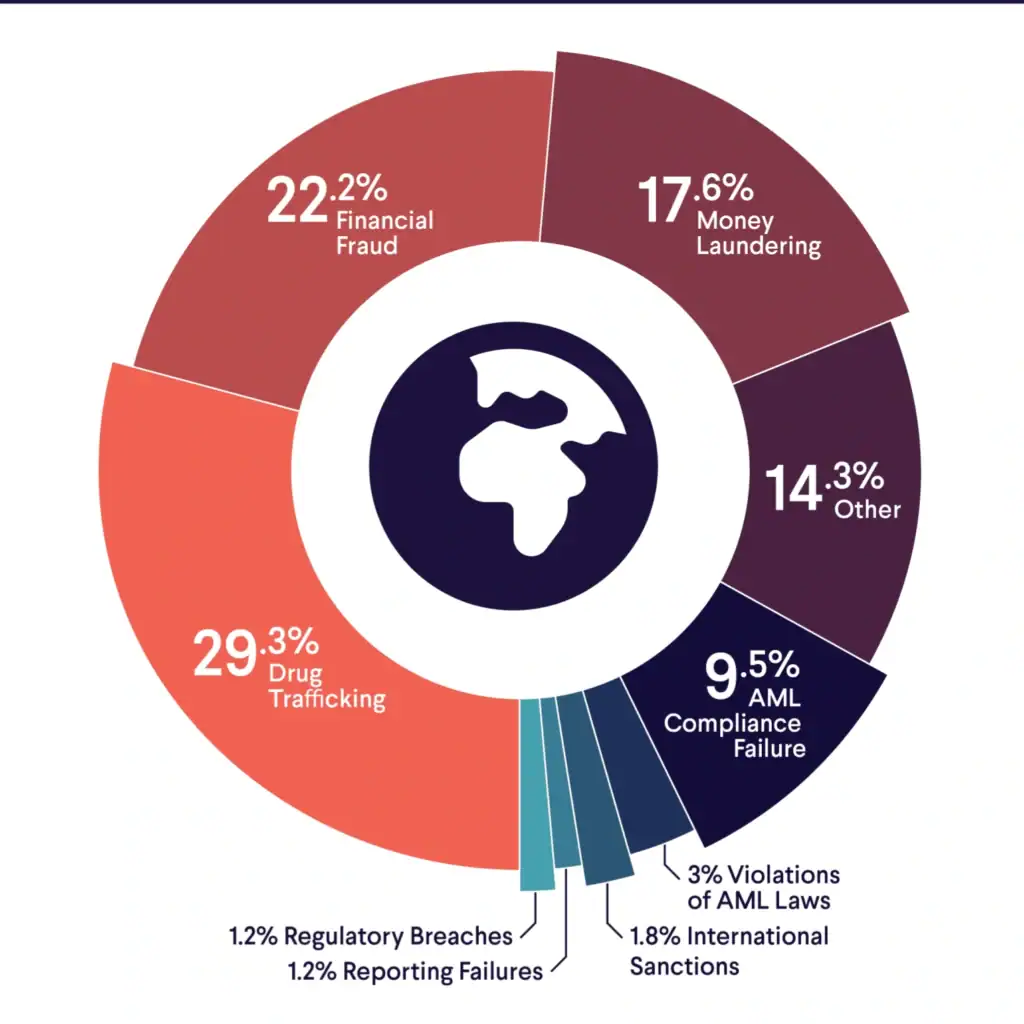
Challenges in AML Compliance and Implementation
- False positives remain a persistent issue, with 43% of alerts flagged as false in 2025, leading to operational inefficiencies, investigation backlogs, and elevated compliance costs for financial institutions.
- The complexity of international regulations continues to challenge organizations, pushing 68% of global firms to adopt customizable, rule-based AML platforms capable of adapting to multi-jurisdictional requirements.
- Data privacy and security concerns are rising with the growth of cloud-based AML platforms, 31% of companies in 2025 cite data sovereignty and cybersecurity risks as key barriers to full adoption.
- High implementation and maintenance costs remain a hurdle for SMEs, with AML software-related expenses increasing by 23% in 2025, due to demand for AI capabilities, ongoing updates, and vendor support.
- Legacy infrastructure integration is a technical bottleneck for 38% of financial institutions, as older systems lack API compatibility and require costly middleware to enable real-time AML functions.
- The rise of sophisticated laundering methods via cryptocurrency mixers, P2P platforms, and shell networks demands continuous AML software updates, adding to resource strain and operational complexity.
- Talent shortages persist, with 33% of compliance teams in 2025 reporting a lack of skilled professionals capable of managing advanced AML tools, alert tuning, and regulatory reporting platforms.
Recent Developments
- In 2025, the Financial Action Task Force (FATF) reinforced its stance on AI-driven AML tools, issuing updated guidance that emphasizes real-time anomaly detection, behavioral analytics, and enhanced monitoring for virtual assets and cross-border transactions.
- Verafin expanded its AI-powered platform in 2025, improving real-time detection accuracy by 28% for small to mid-sized financial institutions and growing its customer base by 24% year-over-year as demand surged among community banks and credit unions.
- FICO’s AML 2.0 suite, now in widespread deployment by 2025, integrates advanced blockchain analytics and predictive modeling, improving detection of crypto-related laundering schemes and reducing investigative turnaround times by 35%.
- Oracle’s cloud-based AML solution, launched for fintechs and regional banks, now achieves a 30% faster deployment rate in 2025, enabling quicker compliance setup and integration with regulatory APIs.
- Temenos and Microsoft Azure deepened their collaboration in 2025 to offer an end-to-end AML cloud solution, resulting in a 33% reduction in false positives and enhanced GDPR-compliant data security for financial clients in Europe and APAC.
- Privacy-preserving AI adoption in AML platforms increased significantly in 2025, with 41% of institutions now using federated learning and encrypted data pipelines to balance compliance and consumer privacy under global regulations.
- The crypto industry’s use of AML blockchain tools surged by 38% in 2025, as tighter global regulations (including MiCA and FinCEN proposals) pushed crypto exchanges, wallets, and DeFi protocols to adopt on-chain surveillance and transaction risk scoring.
Conclusion
As financial crimes evolve, so too must the software designed to combat them. Anti-money laundering software is at the forefront of this battle, providing essential tools for banks, fintechs, and governments worldwide. The AML software market is set to grow rapidly, driven by advances in AI, machine learning, and blockchain. While challenges such as false positives and data privacy remain, the future looks promising as technological innovations continue to reshape the landscape of financial compliance.
Hover or focus to see the definition of the term.





